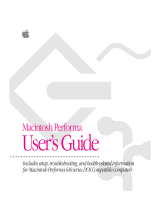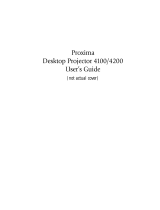
K Apple Computer, Inc.
© 1994 Apple Computer, Inc. All rights reserved.
Under the copyright laws, this manual may not be copied, in whole or in part, without the
written consent of Apple. Your rights to the software are governed by the accompanying
software license agreement.
The Apple logo is a trademark of Apple Computer, Inc., registered in the U.S. and other
countries. Use of the “keyboard” Apple logo (Option-Shift-K) for commercial purposes without
the prior written consent of Apple may constitute trademark infringement and unfair
competition in violation of federal and state laws.
Every effort has been made to ensure that the information in this manual is accurate. Apple is
not responsible for printing or clerical errors.
Apple Computer, Inc.
1 Infinite Loop
Cupertino, CA 95014-2084
(408) 996-1010
Apple, the Apple logo, Apple SuperDrive, AppleTalk, EtherTalk, LaserWriter, Macintosh,
MacTCP, and Performa are trademarks of Apple Computer, Inc., registered in the U.S. and
other countries.
Apple Backup, Apple Desktop Bus, Apple Restore, AppleScript, Balloon Help, Disk First Aid,
Extensions Manager, Finder, and Macintosh PC Exchange, PowerTalk, and QuickDraw are
trademarks of Apple Computer, Inc.
Adobe, Adobe Illustrator, Adobe Photoshop, and PostScript are trademarks of Adobe Systems
Incorporated, which may be registered in certain jurisdictions.
ExposurePro is a registered trademark of Baseline Publishing, Inc.
Helvetica and Times are registered trademarks of Linotype Company.
IBM is a registered trademark of International Business Machines Corporation.
QMS is a registered trademark of QMS, Inc.
QuarkXPress is a registered trademark of Quark, Inc.
SuperPaint is a registered trademark of Aldus Corporation.
Tektronix is a registered trademark of Tektronix, Inc.
Trinitron is a trademark of Sony Corporation, registered in the U.S. and other countries.
Simultaneously published in the United States and Canada.
Mention of third-party products is for informational purposes only and constitutes neither an
endorsement nor a recommendation. Apple assumes no responsibility with regard to the
performance or use of these products.
The Apple Publishing System
This Apple manual was written, edited, and produced on a desktop publishing system using
Apple Macintosh computers and QuarkXPress. Technical illustrations were drawn in Adobe
™
Illustrator; screen shots were created and modified with system software, ExposurePro, Aldus
SuperPaint, and Adobe Photoshop. Proof pages were created on Apple LaserWriter printers and
on QMS and Tektronix color printers. Final pages were output directly to separated film on a
PostScript
™
-driven imagesetter.
Text type is Times
®
, display type is Helvetica
®
Narrow, and cover type is Apple Garamond,
Apple’s corporate font. Ornaments are custom symbols designed for Apple Computer.
PostScript, the LaserWriter page-description language, was developed by Adobe Systems
Incorporated.























